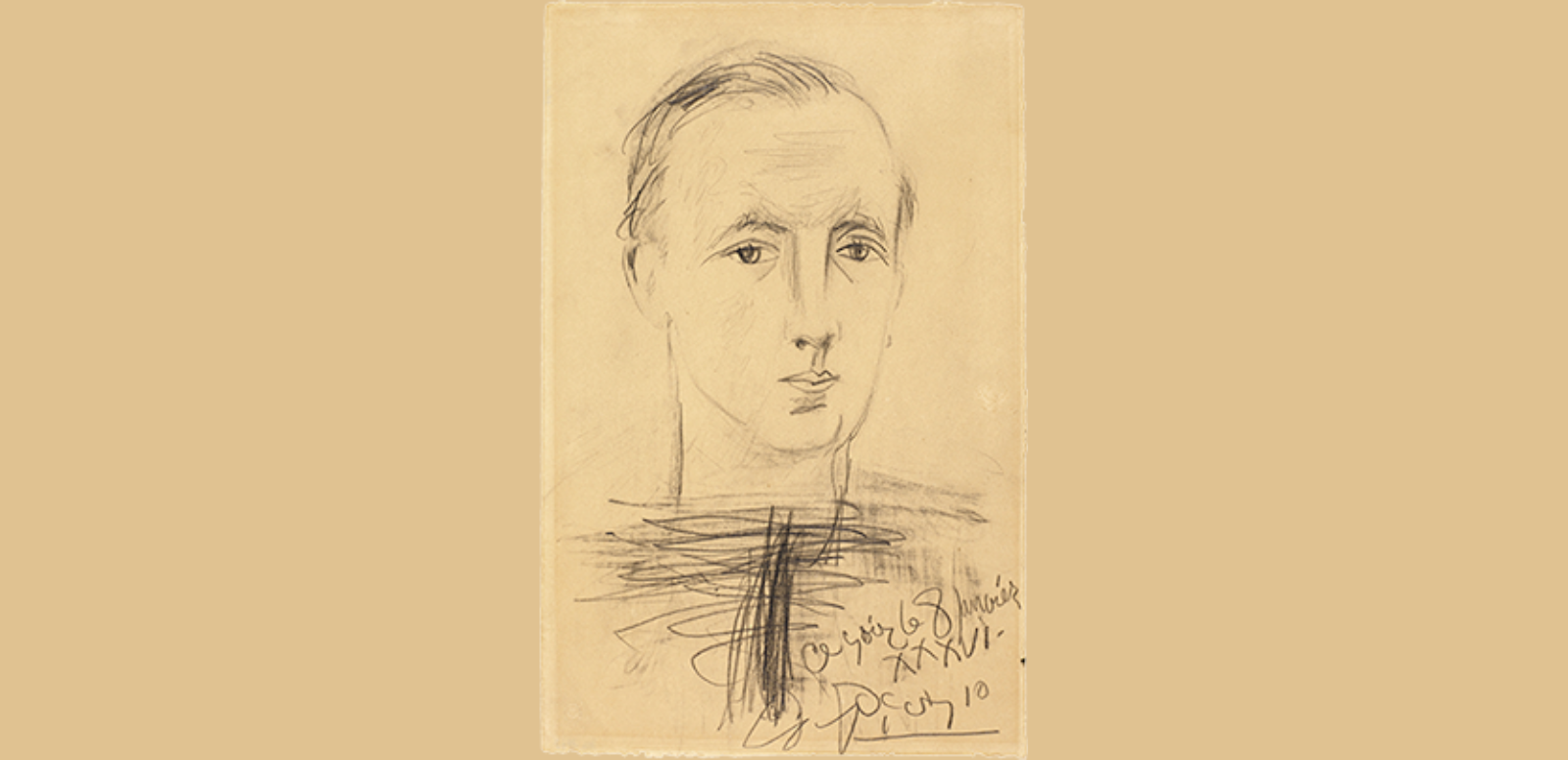
© Sucesión Picasso, VEGAP, Madrid, 2023
Paul Éluard (1895) was a French poet known for his surrealist work. From a bourgeois family, the poet studied at the Lycée Colbert, but had to interrupt his studies when he was diagnosed with tuberculosis. It was in Paris that he began to write his first poems and was called up to fight in the Second World War, which, thanks to his illness, he managed to avoid.
The Malaga-born painter's relationship with the poet was also politically charged. As explained in the introduction to the exhibition "Pablo Picasso and Paul Eluard: A Sublime Friendship" at the Museu Picasso Barcelona, at the outbreak of the Spanish Civil War, Éluard and Picasso took sides with the legitimate government and the Republican cause. And at the same time, thanks to the poet, Picasso met his partner, Dora Maar, the surrealist photographer, who documented the process of creating the work Guernica.
At the same time, Éluard was moved by the bombing of Madrid by Franco's army and wrote his first overtly political poem "Novembre 1936". This text inspired Picasso to produce the engravings "Franco's Dream and Lie" in January 1937.
The two spent their summer holidays for three consecutive years at the Hotel Vaste Horizon in Mougins with another group of friends, cultivating a friendship of mutual admiration and emulation. During this period of closeness, between 1936 and 1941, Picasso painted several portraits of Nusch, Maar and Eluard's daughter Cécile, as well as a cryptic portrait of Paul Eluard disguised as an Arlesian, known as "Arlesian Nursing a Cat" (Museu Picasso Barcelona, 2019).
The outbreak of the Second World War was to drive them apart, and the French poet alternated his residence in Paris with stays in Royan. In 1942 Éluard joined the French Communist Party and had to go underground, frequently moving away from Paris. Nevertheless, he and Picasso remained in contact and met at the artist's studio, at Le Catalan, the café that became the meeting place for Spanish exiles, or at the home of Christian and Ivonne Zervos.
Picasso and Eluard collaborated with peace movements and congresses and in the production of the book Le Visage de la paix. Picasso's pigeons are used for posters at the congresses and become a pacifist symbol.
Paul Éluard died of a heart attack on 18 November 1952. Picasso, accompanied by friends and comrades from the Communist Party, mourns the poet's death and draws a dove with the inscription "pour mon cher Paul Éluard".
Referencias:
- Museu Picasso Barcelona (21 November 2019). Paul Eluard and Picasso, passion for poetry. https://www.blogmuseupicassobcn.org/2019/11/paul-eluard-y-picasso-pasion-por-la-poesia/?lang=es
- Museu Picasso Barcelona (2019). Pablo Picasso and Paul Eluard: A sublime friendship. http://www.bcn.cat/museupicasso/es/exposiciones/temporals/eluard-picasso/

